


Max Kestner: Drømme i København 1
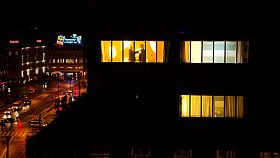
Kære læsere.
Filmkommentarens to skrivere var i biografen sammen. De så Max Kestners nye film, der får biografpremiere straks i det nye år. De var ret uenige om filmens kvalitet. Se nedenfor.
A film blog by Allan Berg Nielsen & Tue Steen Müller



A film blog by Allan Berg Nielsen & Tue Steen Müller

Kære læsere.
Filmkommentarens to skrivere var i biografen sammen. De så Max Kestners nye film, der får biografpremiere straks i det nye år. De var ret uenige om filmens kvalitet. Se nedenfor.

Henrik Ipsen hedder fotografen og det er ham, der skal have ros for sin indsats i en film, som ellers set ud fra sin ambitiøse præmis er mislykket. Ipsen har blik for København og har komponeret billeder, som er frapperende flotte, hvadenten de har de nye glashuse ved vandet som motiv eller er fra baggårdene eller skildrer gader med vidunderlige facader, der vidner om byens mangfoldige skønhed.
Max Kestner har på dette område fået, hvad han som instruktør har bedt om. Det går så galt, når han selv skal træde i karakter som instruktør. Han har i denne funktion f.eks. bedt grupper af medvirkende – ofte placeret i forgrunden i slørede billeder hvor bagggrunden er skarp – om at levere smalltalk, formentlig for at skabe en stemning af liv. Resultatet er desværre i de fleste tilfælde tåkrummende amatørteater. Der klippes ofte fra disse ”almindelige mennesker” til arkitekter, der drikker rødvin eller står på tegnestuer og diskuterer – hvad de siger er enten ikke til at høre, eller bare sådanne små brudstykker af arkitekt-snak.
Helt galt går det med den tekst, som Kestner selv læser op. Det er tydeligt at han med teksten vil skabe sammenhæng mellem personer, som kan være dem, som vi gennem de oplyste vinduer ser i køkkenerne eller bevæge sig rundt i stuerne eller sidde i en bus på vej til mor eller far… han vil give dem liv med en tekst, der skal overbevise os om, at det kunne være os, der sidder i biografens mørke, lever alene eller sammen med andre, elsker eller ikke elsker, er gammel eller ung. Teksten må have været tiltænkt en dramaturgisk samlende rolle, og kunne i en mindre anmassende form måske have fungeret. Nu studser jeg bare over at en tekst på 3.G niveau har kunnet smutte igennem producent- og konsulentøjne.
Ærgerligt når også musikken, komponeret til filmen af den islandske komponist og musiker Jóhann Jóhannsson, er et fremragende akkompagnement til Henrik Ipsens billeder.
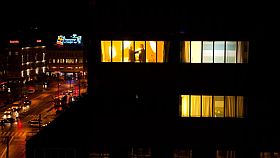
Filmen fastholder – og lever næsten – af et kulturtræk, som om lidt er forsvundet. I nogle årtier har gardiner og persienner været borte fra vinduerne om aftenen. Vinduesåbningerne har været oplyste scener for hjemmelivets dramatik og udstillinger af boligernes scenografi. Det er nu ved at være forbi, man ruller ned og trækker for. Byen hyller sig ind igen i utilnærmelighed. Men i sidste øjeblik har Henrik Bohn Ipsen lagt sin skarphed på facaderne og vinduernes oplyste åbninger, hvori Max Kestner har iagttaget og iscenesat billeder af indbyggernes liv. En ung kvinde læser, et par skændes, en kvinde stiger nøgen og våd ud af badekarret, griber ud efter sin mand og indleder forførelsen. I en fortsat sammenstilling rummer filmen et meget stort tal sådan stiliserede optagelser af byens facader set udefra og i et system af afvekslinger set indefra, så vinduerne, som før skildrede mangfoldigheden, nu viser os byens generalitet i vekslende belysninger, som bliver modsvarende begivenhedsrækker. Denne topografiske skildring fortsætter som variationsværk, til mulighederne alle er gennemprøvet, og byen lever i mig, levende som organisme, uforgængelig som faktum. Bevægende i fremstillingens blide kærtegn.
Netop dette er indsigtens kerne. Det er byen, som er konstansen i en evig variations og forandrings uforandrethed. Byen er der. Altid. Menneskene passerer. Og så er det sådan, at byen ikke er menneskenes. Det er omvendt. (For alle tegnestuer i filmen er ens, alle forhandlingerne der er ens. Det er først i teksterne til sidst, vi ser, at en længere række tegnestuer har medvirket.) Som menneskene og deres liv er ens. De bliver til i elskov, de er i vejen for forældrenes travlhed, de kører ad de samme ruter alene i busserne, de mødes med hinanden i værksteder, på kontorer og i tegnestuer og tror, de skaber byen. De dør ensomme, og der ryddes anonymt op efter dem. Nye folk flytter ind i deres boliger, som tilsammen er byen, som består. I den fineste komposition af et mylder af juxtapositioner, fortæller Anne Østerud en historie så almindelig og så generel, men også så gribende, at jeg i mørket noterer ”lutter ømhed” som det eneste under den biografvisning.
Som tegnestuerne er ens og generelle er alle arkitekter altså ens i denne film. Måske er de ikke ydmyge over for byens tilstedeværelse – ude i den såkaldte virkelighed, inden i alle de andre film og bøger. Men her er de ydmyge. Og uskarpe i forhold til huset, som rummer deres tegnestuer, i forhold til deres vægge, reoler, vinduer, udsigter. Som jeg tidligere skrev her på bloggen, filmen nok ville være, det er den, nemlig et fokusskift fra Esbjergfilmen, Kestner og Bohn Ipsen tidligere lavede så beslægtet. De horisontale køreture med kameraet begynder til akkompagnement af samtaler, dialoger, som ikke er indhold, men lyd kun, mennesker, som taler. Hvad de siger, er underordnet, og vi ved det også i forvejen, for vi kender dem så godt. Og kamerabevægelsen når omsider frem til dem. Måske er de i fokus, måske ikke. I filmens fortællings skarphedsområde er de det aldrig. Men det er deres huses facader indvendig og udvendig. Det er byens elementer, det er byen. Jeg ser Max Kestners film som et stort topografisk værk placeret mellem Magris Trieste, Pamuks Istanbul, Ruttmanns Berlin og drilsk nok Calvinos række af ubesøgelige og usynlige byer.
Efter forpremieren forleden (der har været en række i byen) talte jeg med en fagmand, en forstandig specialist. Han havde nu set filmen et par gange eller tre. Og han hævdede bestemt, at den indeholder en alvorlig inkonsekvens. De medvirkende er i fotografisk fokus, er tegnet skarpt ikke kun, når de tilfældigvis befinder sig i skarphedsområdet, som i hver optagelse er muren, væggen, vinduet. De er tegnet skarpe af og til og ofte umotiveret. Jeg tror ikke, han har ret, og i tillid til det, giver jeg dette nye højdepunkt i dansk film fem penne.
Max Kestner: Drømme i København, Danmark 2009, 72 min., 35 mm. Manuskript: Dunja Gry Jensen og Max Kestner, fotografi: Henrik Bohn Ipsen, klip: Anne Østerud, musik: Jóhann Jóhannsson, lyd: Morten Green, produktion: Henrik Veileborg. Produceret af Upfront Films. Premiere: 7. januar 2010 og derefter i en vis biografdistribution, 2 kopier. Senere tv-visning og i dvd-distribution. Indhold: En topografisk skildring af byen København. Filmen handler om byens fysik og form, dens gader og bygninger. Menneskene færdes der og lever der. På gennemrejse og i kort tid. Byen er skarpttegnet, menneskene er uskarpe, sådan er konceptet.
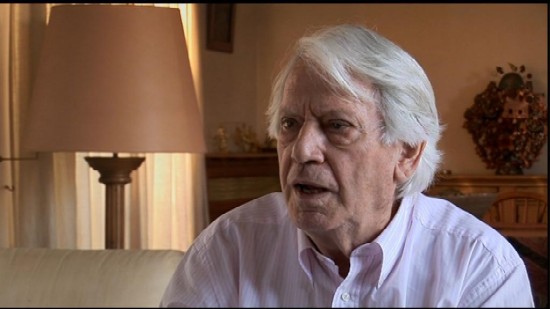
The CMCA (Mediterranean Centre for Audiovisual Communication) has finished its 14th festival edition, and the publicity around the awards, the juries (2, one for documentary, one for reportage) and the films have never been bigger. The awards were given in Marseilles and the happy winners could all go back with good money for the development of the next project, to deal with the countries and matters from South and North of the Mediterranean Sea.
Read all about it in the newsletter (in French), below.
Photo from the beautiful film by Albert Solé, ”Bucarest, la Mémoire Perdu” (2008, 89 mins.), one of 8 winners in 7 categories.
http://www.cmca-med.org/fr/newsletter/upload/medaudion82daecembre2009.pdf

The 12th edition of a festival that has grown in volume and importance. You felt it immediately when you were with the Turkish organisers and their young group of volunteers – all together people from or linked to the Association of Documentary Filmmakers in Turkey: This festival is made out of passion and commitment. They want people to come to see the world, ”and the truth”, as they phrase their slogan. Entrance to the many screening places (7, including cultural institutes like the French and Italian) was free, and almost all of the screenings took place in the area of Taksim in Pera (Beyoglu). Many of the screenings that I attended were full and there were around 20 foreign guests invited – thanks to the Danish Embassy for helping the festival to cover my flight expenses.
Learning, this is what it was about for us guests, and for the organisers and their Turkish filmmaking colleagues. I was there 6 years ago and saw with great joy that Turkish filmmakers now also make films about current social and political issues, not to forget documentaries that deal with horrors of the past. At my previous visit I watched a majority of nice cultural films about life in Anatolia, rituals, legends, anthropological and sometimes touristic stuff, this time it was different with a more outspoken criticism of the society and a choice of controversial themes.
One film will stay in my mind, ”Prison Nr. 5: 1980-1984” (PHOTO) by Cayan Demiel, who tells about the undescridable horrors that took place in the prison of Diyarbakir following the military coup in 1980. Most of the prisoners were Kurdish accompanied by socialists and communists. ”Turkification” was the aim of the regime and torture was the means. I will later this month review this extraordinary documentation.
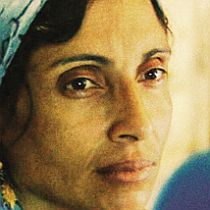
Learning by watching – still the key quality challenge for the documentary film maker. At the festival in Istanbul your film-journey constantly took you to places, where you could not go yourself or where you would never dream of going due to the simple fact that you did not know of the existence. You go from the cinema, from the confrontation with the magic screen, you have experienced something new, and you leave for the Istanbulian street reality, where armed policemen guard on the Taksim Square. On television at the hotel it is being reported that what was seen “live” some hours ago, was one more Kurdish demo for the improvement of living rights in the Turkish society.
Back to the cinema, where ”The Children of Adam” by Georgy Paradanov (Russia, 2007, 50 mins.) took me to the Ezids in Armenia in a classical visually impressive film language, that stressed the director’s intention to let the images speak for themselves. The key scenes in the film are from a wedding that ressembles scenes from the old master Pelechian’s film ”Four Seasons”, one of the best documentaries ever made.
As the Russian film insisted on the image and not on the word, so did the Israeli filmmaker Ada Ushpiz who brought the ”Desert Brides” (Israel, 2008, 86 mins) to the Turkish audience. A film from the Negev desert in Israel, about polygamy centered around 3 bedouin women, who live with husbands, who have several wives. The story is told in a fine cinematic language and the director has clearly been able to get very close to the women. There are wonderful conversation pieces between the women, the men are treated without the easy pointing the finger-at-them, they are there, also discussing in fine scenes full of humour. Or the camera follows in direct style scenes what goes on when the man goes from one wife to the other. The more I think about that film, the better it gets… Take a look at the photo of one of the women, who is a wedding photographer, married to a man who also has several wives!

“VTR Film Directing Research Production” is run by director Enis Rıza and executive producer Nalân Sakızlı. Husband and wife. Around them they have young committed and skilled women – the festival director of this year, Bahriye Kabadayı, the conference director of this year Ebru Seremeti, and the producer and coordinator Selma Salman, who by the way is the partner of Sinan Sakızlı, composer and music producer, and son of Enis and Nalan. As they used to say in American soaps… are you confused?
You should not be. This film collective, behind the festival and congress, is constantly on the road both to produce new films but also to make the necessary film political moves to make changes for the better in Turkish documentary. The word solidarity is still used in Istanbul among the documentarians.
Enis Riza (PHOTO) had a new film in the festival, “Recycling Life” (Turkey, 2009, 105 mins.),about a young man, who used to be a homeless paper collector, and a very good one, he was. The street life was close to drugs, and yet he made it out of the underground hell and set up a bookshop! The film has wonderful moments, is warm and has a charismatic main character. The scenes with him and his mother are unforgettable. However, it is far too long, and Riza advertised a cut down to one hour, which is a wise decision, also for the film’s chances to reach a European audience.
The company has a fine website with great music and a lot of info on what “Eniz and his Harem” is doing.
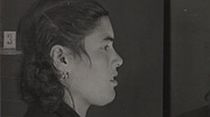
In the framework of the festival a Congress was organised on the Saturday December 12 at the Galatasaray University that is situated wonderfully at the Bosporus. The Congress, organised for the 9th time (the festival for its 12th time), had the theme of ”Documentary. An art Form?” and included invited foreign guests to speak on the first day and Turkish academics on the second.
The Congress proved that filmmakers want to talk about their own work and experience, and are not able to theorize on an academic level – generally speaking, and that goes for a blogwriting documentary promoter as me as well. Nevertheless, let me just give you some notes from the day as it ran:
Dutch film journalist Pieter van Bueren wanted to change the conference focus by putting a more important question instead of the reflection on whether documentaries are art or not: What is a good documentary?, and he answered himself by advocating exclusively for cinematic qualities and not topical. Greek veteran Manthoulis, living in Paris, who showed the audience his fine film on the Greek civil war, said that if an artist is not completely free, he is not an artist, and confessed to have done self-censorship in order to reach the audience. He rejected the notion that documentaries are made without an audience in mind and used the image of a man standing on a mountain shouting to the woman on another mountain ”I love you”, as an illustration of the relationship between director and audience!
The only director who was able to speak theoretically about her work in a fascinating way was Portuguese Susana de Sousa Dias, a unique filmmaker (and an academic who is currently writing her phd on ”the image”) working on the image, the still photo and the archive material. She made the masterpiece ”Still Life. Faces of a Dictator” in 2005 and this year premiered ”48” (PHOTO). I will review that film later this month. I am not able to summarize her intervention at the conference, but hope that she will send her text to DOX Magazine and/or this site for publication.
Many others took the floor, among them: Daniela Broitman from Brazil, whose latest activist film I will review later this month, Rigoberto Lopez Pego from Cuba who advocated for the new travelling Caribbean documentary festival, Greek Gerasimos Rigas who revealed warmly how his film ”Parvas” had come to life, Belgian Jean-Noel Gobron who complained about all the systems that you have to face as a filmmaker to get funding.

Mirakler sker. Noget så usandsynligt som netop denne film på en dansk tv-kanal i en overdådig smuk udgave. Det skete i aftes på DR K. Og underet gentages 13. december 21:00. Se den film igen efter et halvt århundrede. Og oplev, at meget af det nye begyndte her. Hvis det ikke er alt det nye, sådan fornemmes det i hvert fald.
Her er ingen henvisning til en såkaldt virkelighed mere virkelig end filmen. “Filmen skaber en lukket cirkel, en lukket oplevelse – I fjor i Marienbad eller ‘Persuation’, som Resnais har kaldt den.Hvad laver personerne, når de ikke er på det fantastiske hotel? Ingenting, svarer Robbe-Grillet (manuskriptforfatteren), de har ingen anden eksistens end den, vi har givet dem…” (Penelope Houston) Det var en åbenbaring for mig dengang i 1961. Filmen er i sin nye restaurerede version så dejligt provokerende i sin oprindelige skønhed som dengang.
Og så ser jeg, at 16:9 forlængst har gjort opmærksom på den restaurerede version, som er kommet på dvd. Her er Juliane Kvitsau Mølgaards omhyggelige akademiske præsentation af film og relancering:

no-one, when it comes to the exclusivity rules of film festivals! There is nothing new in the fact that major festivals insist on having premieres (world, international, European or whatever they want to call it) and therefore block for screenings in other festivals before their events take place, and it has been discussed again and again whether this makes sense or not. The festivals in Berlin, Cannes and Venice do so – but also documentary festivals like idfa in Amsterdam and Visions du Réel in Nyon (a major festival?) make this point to the filmmakers, producers, distributors and sales agents.
I am writing this in anger as I have just experienced that two films that we wanted for the Magnificent7 non-competitive festival in Belgrade late January will not go there as they are eventually to be screened in Berlin a couple of weeks later! Both filmmakers, a young talented Dane and a world famous experienced French, had accepted to go to this festival that put the director in focus, but had to reject the invitation because of an eventual Berlin screening.
… and the losers are the filmmakers and the audience. Would it matter the professional visitors to the Berlin festival, not to talk about die Berliner, the films being enjoyed by an audience in Belgrade? These exclusivity rules are ridiculous, do not make sense and are contradictory to the promotion of the creative documentary to a broader audience!